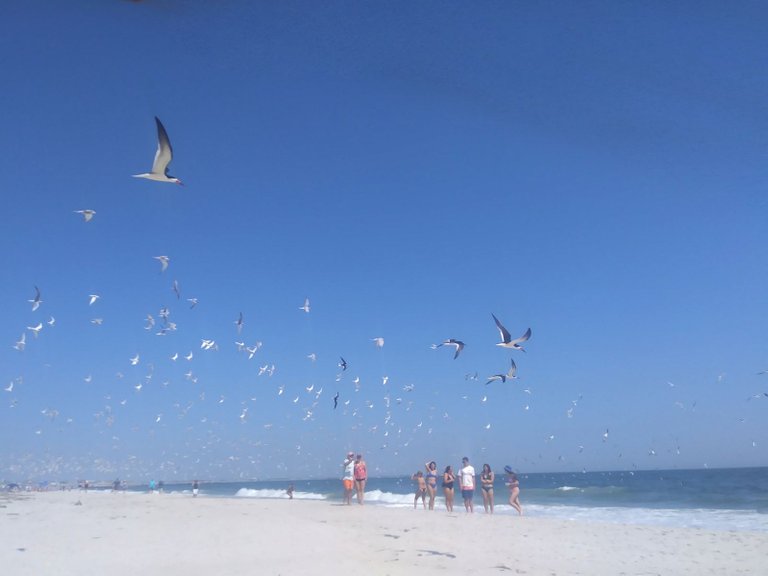
Most people go to the beach to soak up sun and enjoy the sea air. On some south shore Long Island (NY) beaches, there is an added pleasure. Nesting birds share the beach. Though nesting areas are marked off, still interaction between the birds and humans, at certain times of the year, is inevitable. In the picture above, birds are swooping down on humans that have come too close to the nests.
Nesting Area, With a Warning Sign Posted
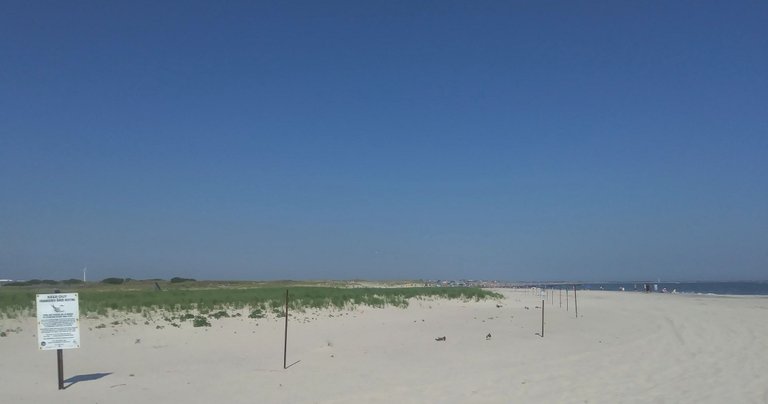
According to The New York Audubon Society, there is an etiquette for enjoying the beach with the birds: Don't play ball near their nesting area; Don't bring an unleashed dog; Don't leave fishing lines behind (birds get entangled); Don't leave trash around or do anything that will attract predators. Feeding gulls falls into this category because gulls eat the eggs of nesting birds.
Did He Get Too Close?
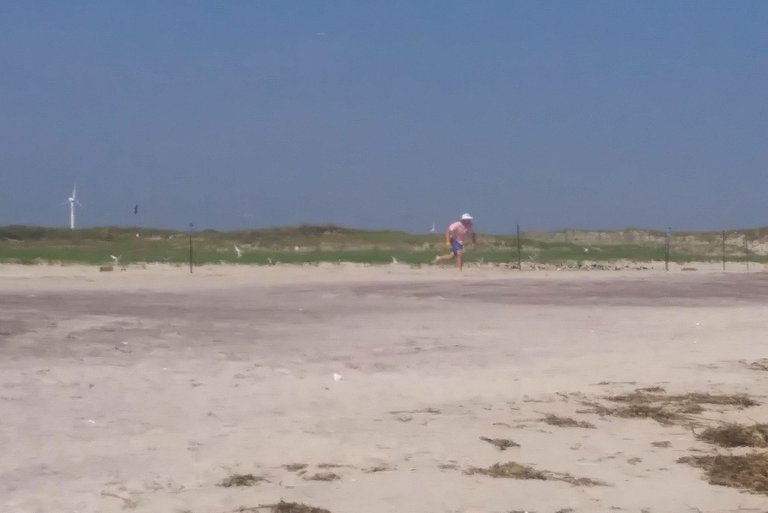
Nesting season on the Long Island beaches lasts from April until September. Besides the posting of signs, there are other indications you are in a nesting area. Birds swooping down and attacking people is one of those signs. My daughter got too close once and was chased away. When she went back a second time to get a closer look (and yet not go in the nesting area), she must have been recognized (!). This time the birds chased her and pulled at her hair.
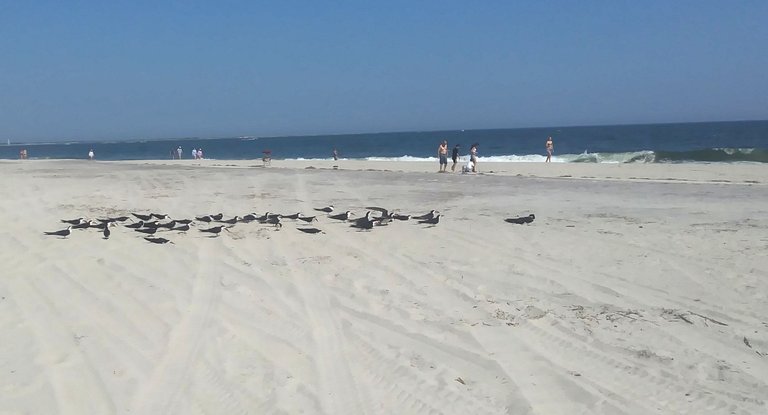
Three bird species that nest on our local beach are the American Oystercatcher, the Least Tern, and the Piping Plover. Judging by the pictures on the Audubon site, the adult birds standing on the beach in this picture look like Oystercatchers. The Least Terns are considered Threatened, Piping Plovers are considered Endangered in New York. American Oystercatchers are not listed as Endangered or Threatened, but they are on the Audubon Society's Partners in Flight watch list.
Birds Nesting
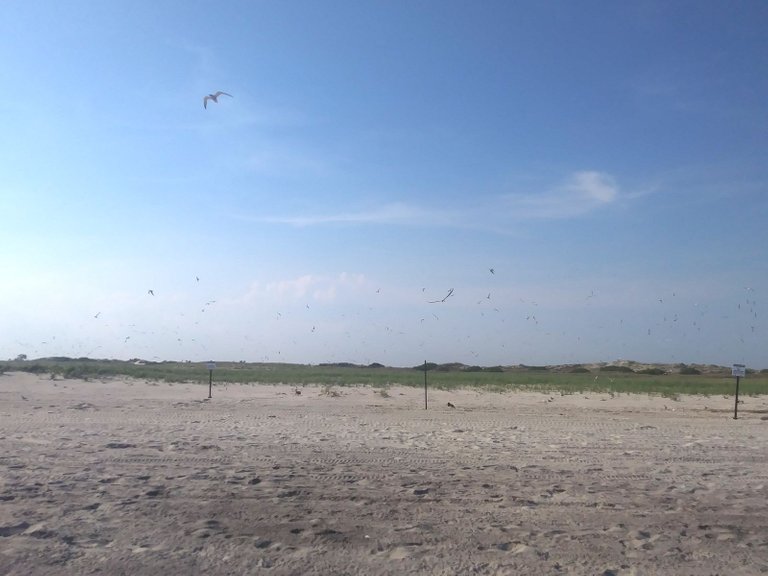
In an interesting twist of fate, Hurricane Sandy, which wreaked havoc across Long Island, opened up new nesting areas for the Piping Plover. According to the U. S. Fish and Wildlife Service, wind-driven ocean waves washing over the beach created flat sandy areas. These are ideal for Plover nesting.

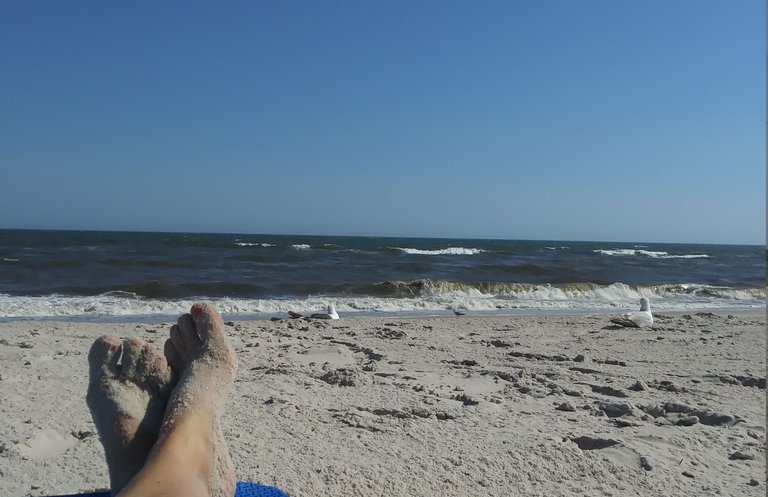
Here are some birds just hanging out, impervious to the presence of a human. My daughter's sandy feet are in the shot.


Here's an injured bird. It was hopping around awkwardly. Is this a gull? I can't identify it.

****The Least Tern is the smallest tern in the Americas.****
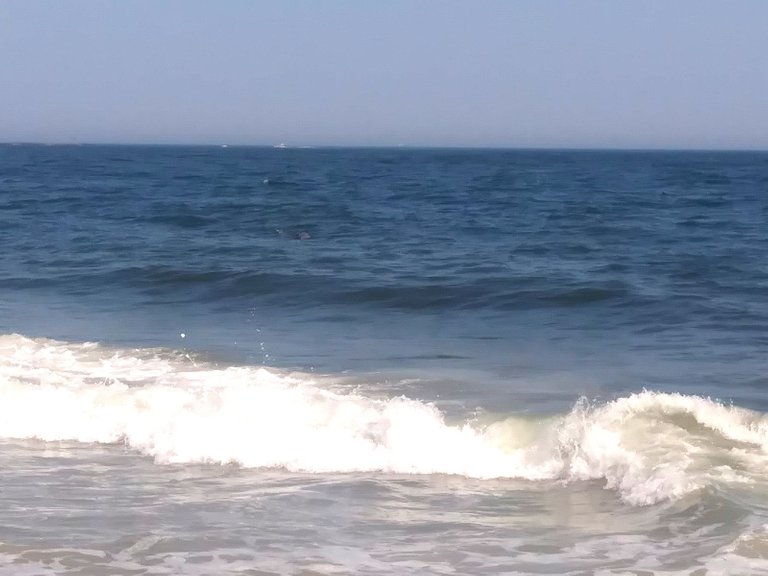
This picture of the ocean was taken from Tobay Beach, which is on Jones Beach Island. Jones Beach Island is a barrier island on the south shore of Long Island (NY). The beach is free to senior citizens (my husband and I get in free) and open to town residents for $60 a years pass (per car). There are discounts for veterans and other groups. You can always find a quiet place to sit on Tobay Beach if you are willing to walk a bit.
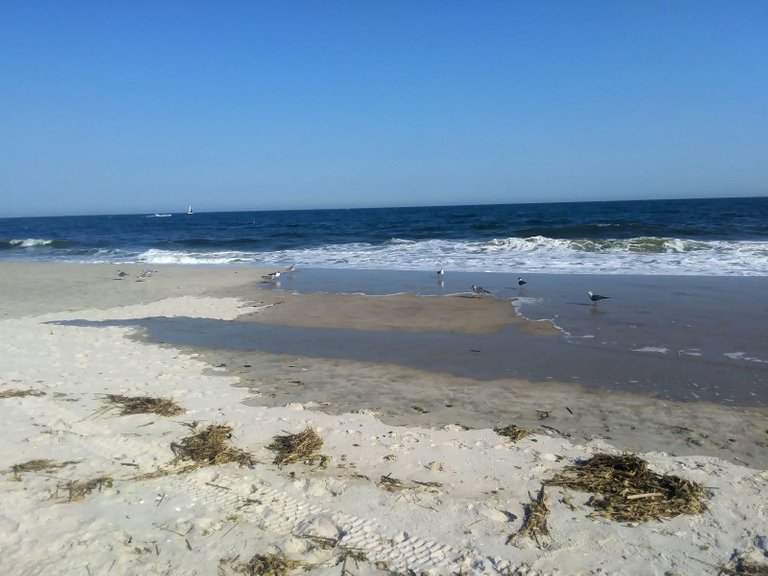
Although Piping Plovers may delight in the changes wrought by a severe storm, humans have a different perspective. Recently, the Town of Oyster Bay Commissioner asked the Army Core of Engineers to rebuild the beach. There has been such severe erosion from storms that a significant risk of flooding exists on a local thoroughfare.

All pictures in this blog were taken with my daughter's cell phone camera. She gave me permission to post them here. I think this is my first blog in the Amazing Nature community, although some of my friends do blog here. I don't take a lot of pictures, although I love nature and science.
Beautiful :) and the first photograph is spectacular.
Thank you! My daughter loves the beach :)
Those are actually Black Skimmers, also a very cool bird. And the injured bird is an immature Ring-billed Gull. Nice post, hopefully the birds have a very successful nesting season and people get to enjoy their share of the beach too :)
Thank you! I was hoping some clever person would be able to identify the birds. We have so many well-informed nature lovers on Hive.
Great pictures and beautiful birds!
Thank you very much!!
It's so nice that people here in the United States can go to the beaches safely and enjoy the ocean and wildlife. Great job.
Thank you very much for your support. We are lucky to have such resources to enjoy.
We appreciate your work and your post has been manually curated by zoology team (oscurity,nelinoeva) on behalf of Amazing Nature Community. Keep up the good work!
Thank you very much. It is a lovely community.